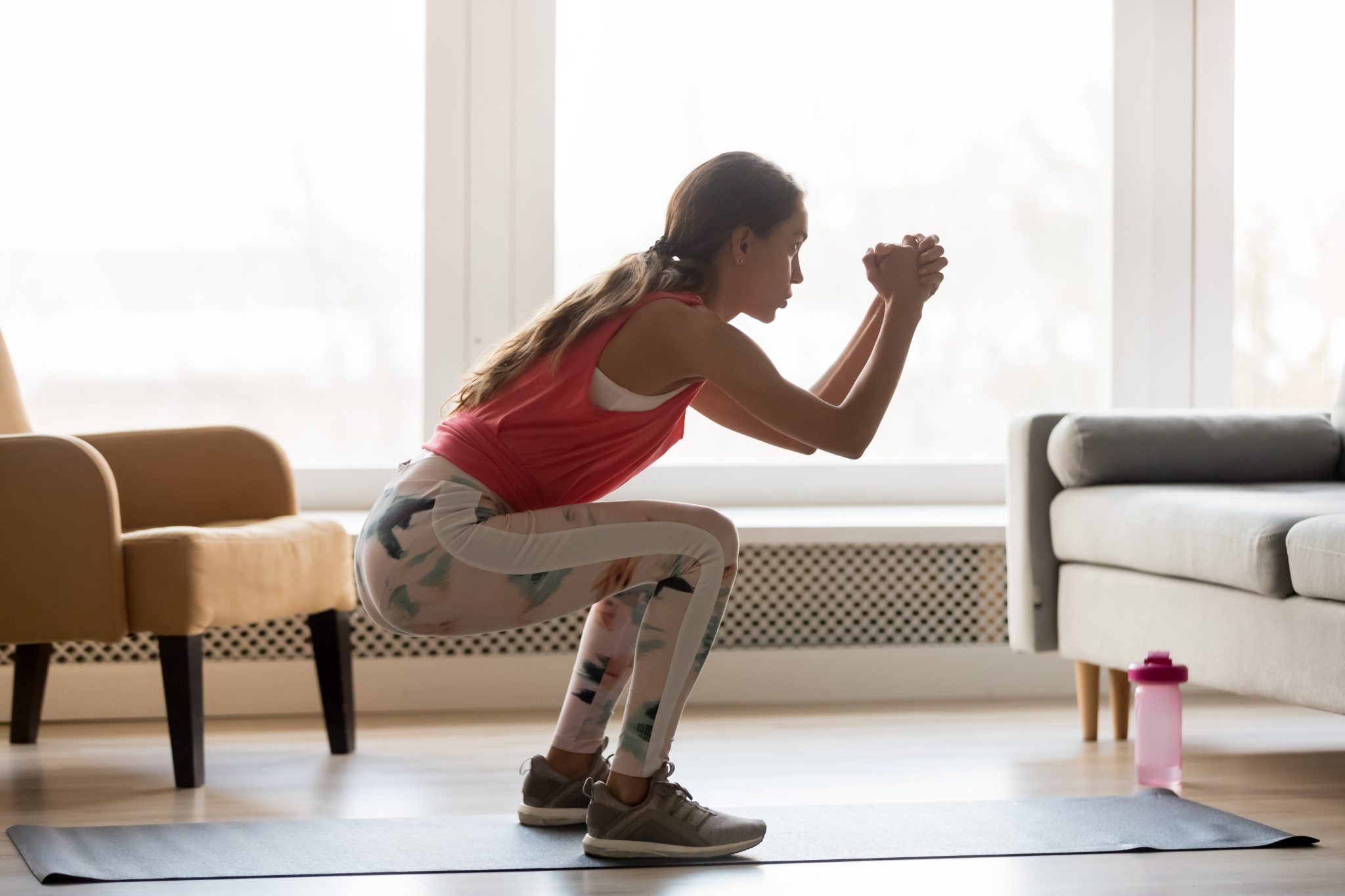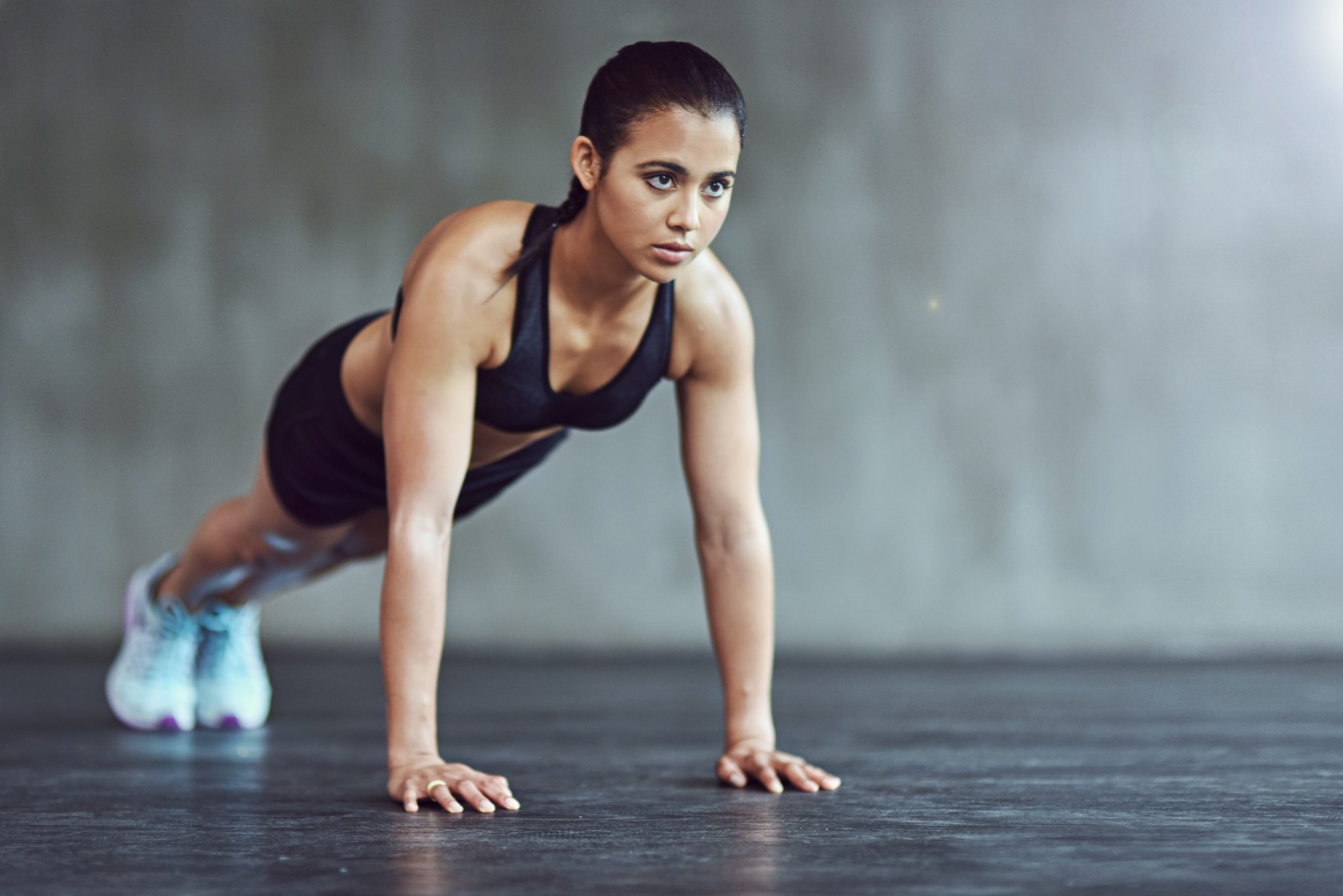Fitness trainers explain how to strength train without weights.
While the ongoing coronavirus pandemic has kept us all on lockdown, fitness lovers and erstwhile gym-goers have had to get used to training at home, often with little or no equipment. As a result, bodyweight strength training has replaced the dumbbells, becoming the hero of the hour for many.
The good news is that bodyweight strength training – when done in the right way – is great for building muscle and improving your overall fitness, without putting too much strain on your joints. A good arsenal of bodyweight training exercises can also help you to develop your technique and target specific muscle groups, making you that much stronger for when you do decide to pick the weights back up.
Now that gyms have reopened, there’s no need to kick your bodyweight training to the curb. In fact, with gyms like PureGym and David Lloyd operating at reduced capacity and with less equipment available to ensure social distancing is adhered to, bodyweight training might be the way forward if you want to continue making the most of your workouts.
You may also like
How long does it take to see results from strength training?
We asked fitness trainers for their favourite bodyweight strength training exercises. Here are their top five, to help you stay on top of your game, whether you’re back in the gym or working out in your living room.
Squats

Tashi Skervin is a runner, trainer, and the founder of the fitness bootcamp TSC Method, who believes that the hype about squats is all justified. She explains that, due to the fact that it uses a large amount of muscles, “this compound exercise is a great way to develop full body strength”.
To do a squat, “first you need to establish a squat stance”, in which you have your knees and feet under or slightly wider than your hips. To do your squat, “imagine you’ve got a piece of string attached to your head and you’re sitting down in a chair”. The “string” should keep your head up and your chest tall as you complete your sitting movement. Tashi says that, once you have sat down as far as you can, “stand back up and go again”, aiming for “four sets of ten to 12 reps”.
Press ups

“Press ups are amazing for working your chest, arms and abs”, Tashi says. They are also super easy to progress and regress, so you can make them as hard or easy as you want. You can try doing them “against a wall, or on the floor on your knees or toes”. Just make sure you do “whichever variation allows you to get the most range of movement”.
Whatever sort of press up you’ve opted for, your goal is to “get your chest as close to the ground as you can”, and, as Tashi explains, it’s important to “inhale as you lower your chest to the ground and exhale as you push up”. And, if you’ve opted to do your press up on your knees, “make sure you tilt your pelvis forward to engage your core and work through the full exercise pattern”.
Burpees
Burpees are a great exercise because, according to personal trainer and co-founder of The Athlete Method, Kerry Dixon, “they activate pretty much every muscle in the body”. They are difficult though and they require a lot of energy. But, while they might not get much easier, “you get better and they are very effective!”
You may also like
What is hypertrophy? Fitness trainers explain how to build bigger and stronger muscles
You start out with a squat, “and lower down until your thighs are parallel to the floor”. Then, once you get to the bottom of your squat movement, “place your hands on the floor and kick your legs out behind you”, so you should end up in a press up position. From here, you step your legs back into a standing position, “and jump through your heels off the floor”, and repeat.
Single leg glute bridges
Single leg glute bridges help to target the muscles in your posterior chain, also known as your glutes. As Kerry explains, this can help you “to improve posture and prolonged back pain”.
Start lying flat on your back with one of your legs extended up in the air. “Squeeze your glutes, and raise your hips off the ground as high as you can to activate them”, then simply lower yourself to the floor. You can either swap legs at this point, “or repeat all reps on one leg and then change”.
Forward lunge

A forward lunge can help you to “develop your lower body strength and muscle”, according to fitness trainer Folusha Oluwajana, and improve your “core stability, balance and posture”.
Start standing with your feet planted on the floor, about shoulder width apart. Then, “take a big step forward with one foot” and make sure to “land on your heel first”. From here, you need to lower yourself towards the ground, “bending both knees until the front thigh is parallel to the ground”. Return to your starting position by “pushing through the heel of the front foot”, and then repeat.
Follow @StrongWomenUK on Instagram for the latest workouts, delicious recipes and motivation from your favourite fitness experts.
Image credit: Getty, Unsplash
Source: Read Full Article
